Music Hall Mini Plus Phono Handleiding
Music Hall
Receiver
Mini Plus Phono
Bekijk gratis de handleiding van Music Hall Mini Plus Phono (2 pagina’s), behorend tot de categorie Receiver. Deze gids werd als nuttig beoordeeld door 41 mensen en kreeg gemiddeld 4.4 sterren uit 21 reviews. Heb je een vraag over Music Hall Mini Plus Phono of wil je andere gebruikers van dit product iets vragen? Stel een vraag
Pagina 1/2

music hall mini plus
SPECIFICATIONS:
I/ O Connectors: RCA, 1/8" TRS Stereo
Gain: 41.51 dB gain @ 1kHz at the "0" setting
31.64 dB of gain at the "-10" setting
45.66 dB of gain at the "+4" setting
Input Impedance: 47k ohms
Output Impedance: 32 ohms Headphone, 470 ohms RCA
Frequency Response: 3Hz to 36kHz
Equalization: RIAA +/- 1 dB, 14Hz to 23kHz
Rumble Filter: 20Hz
THD: .005% @ 1KHz
S/N Ratio: >94 dB unweighted
PWR: 15 VDC
Size: 5.5"w x 3.5"d x 1.25"h
Weight: .8 lbs
Indicator: 1 Power LED
input
output
15 vdc
headphone/
line out
+
-
music hall mini plus
mini plus phono preamp
rumble
filter
made in usa
pwr
-
+
cartridge load capacitance
10dB
220pF
120pF 330pF
trim - gain
4dB
0
music hall
Warranty: This entitles you to have the music hall mini plus repaired free of
charge, at our discretion, for one year after the date of purchase, provided the
unit was purchased from an authorized dealer. Your original sales receipt is proof
of purchase date. Music Hall takes no responsibility for defects arising from
accident, misuse, abuse, wear and tear, neglect or unauthorized repair and/or
adjustment. Music Hall cannot accept responsibility for damage or loss that oc-
curs during transit. The warranty does not cover transportation costs.
Claims under warranty: The mini plus should be packed in the original packing
and returned to the dealer from whom it was purchased, or, upon authorization,
to a Music Hall Service Center. It should be sent by a reputable carrier, carriage
prepaid. Since no responsibility will be accepted for a unit in transit to the dealer,
customer, or authorized service agent, customers are advised to insure against
loss, damage, or theft.
For further information contact:
music hall
108 Station Road
Great Neck, NY 11023
Tel: 516-487-3663
Fax: 516-773-3891
http://www.musichallaudio.com

The music hall mini plus is a phonograph preamplier with RIAA EQ.
RIAA equalization is a specication for the recording and playback ofphonograph
records, established by the Recording Industry Association of America (RIAA).
Connecting the mini plus:
input - connect to your turntable
output - connect to your pre-amplier, integrated amp, or receiver
ground - connect to the ground wire from your turntable
Grounding thoughts: The ground post is where things can get complicated.
Ground hums have often plagued the turntable. We recommend using the ground
post to connect to your turntable's ground connection. However, if your turntable
has no ground post on it, then don't use the ground connection. If you experi-
ence hum with the ground connected to the mini plus and your turntable, try
disconnecting the ground on both.
Ground loops are a common occurrence with audio. The more equipment you
use, the higher likelihood you will have a ground loop. The term "loop" refers
to your ground generating unwanted noise from traveling back and forth in a
loop. The turntable is usually the most likely component to have a ground issue.
Another thing you can try, if you have a ground loop, is connecting the turntable
ground to the RCA jack's ground. One thing to keep in mind is that ground loops
can be anywhere in a system, so try and isolate the components that are the is-
sue before you spend a lot of time looking at just one component.
Cartridge load capacitance: The mini plus has three settings: 120 pF, 220 pF
and 330 pF. Set the switch in the position you feel sounds best to you. The dif-
ference might be very slight, but it is there. Most cartridges come with a capaci-
tance load recommendation in the spec sheet for the cartridge. For example the
Ortofon 2M series asks for a loading of 150pF to 300pF. Most Audio Technica
cartridges state 100pF to 200pF for loading. The mini plus has been tested with
multiple turntables and multiple cartridges. We have found it best to use your
ears to set the loading. You can set the loading switch to any setting 120, 220
or 330 with any MM cartridge and no damage will be done to the mini plus or
your cartridge. If you can not hear a dierence we would suggest that you do as
the cartridge manufacturer suggests, and set the loading switch closest to their
recommendation for the cartridge you are using.
Rumble lter: AKA "subsonic lter" cuts very low frequencies (below 20 Hz).
The purpose of a lter like this is to get rid of annoying frequencies that disrupt
the turntable's sound quality. A good rumble/subsonic lter should be inaudible,
meaning you can not hear when it is on or o in the program material you are
listening to. What it will do is help with excessive very low frequency interruptions
from the turntable to the preamp.
Trim - Gain: Control to attenuate the signal level up or down. It is not a volume
control, meaning that signal will still be present even when the level is turned to
the lowest point (in this case -10dB as labeled). If at half way up you are at 0 dB
output level then all the way up you will have +4dB more gain, and all the way
down you will be at -10dB down from a reference of the middle 0 dB. Most users
will be best served to set the control at the middle or 0 setting to get the best out-
come. This is not always the case. In some situations you might need more gain,
like when playing a quiet record or lower output moving-magnet cartridge. In the
opposite situation you might need less gain from a hot or loud record, or if you
have a high output cartridge. Newer cartridges tend to have a higher output level
than older cartridges. For instance, the popular Ortofon 2M series of cartridges
have 5 - 6mV of output. This is much higher than cartridges of old (3 - 5mV).
When using a 6mV output cartridge, you might need to turn the trim gain control
to just below the half or 0 setting. Many factors go into setting the proper level.
We recommend to start at the middle, 0 setting, and adjust from that point to your
personal preference.
mini plus phono preamp
rumble
filter
made in usa
pwr
-
+
cartridge load capacitance
10dB
220pF
120pF 330pF
trim - gain
4dB
0
music hall
Thank you for purchasing the mini plus. We spent a considerable amount of time
designing and developing the mini plus. Hundreds of hours listening and improv-
ing the design. We hope you enjoy using the mini plus, and that it makes listening
to your vinyl collection rewarding. We sincerely appreciate the opportunity to
build a product for you and participate in your love of quality music and sound.
We love what we do and we’re happy to help.
The RIAA equalization curve was intended to operate as the global industry
standard for records since 1954. However, it is almost impossible to say when
the change actually took place.
RIAA equalization is a form of pre-emphasis on recording and de-emphasis on
playback. A recording is made with the low frequencies reduced and the high
frequencies boosted, and on playback the opposite occurs. The net result is a
at frequency response, but with attenuation of high frequency noise such as
hiss and clicks that arise from the recording medium. Reducing the low frequen-
cies also limits the excursions the cutter needs to make when cutting a groove.
Groove width is thus reduced, allowing more grooves to t into a given surface
area, permitting longer recording times. This also reduces physical stresses
on the stylus which might otherwise cause distortion or groove damage during
playback.
A potential drawback of the system is that rumble from the playback turntable's
drive mechanism is amplied by the low frequency boost that occurs on play-
back. Players must therefore be designed to limit rumble, more so than if RIAA
equalization did not occur. Using a rumble lter to lter out the subsonic frequen-
cies may help mitigate the noise from the turntable.
Product specificaties
| Merk: | Music Hall |
| Categorie: | Receiver |
| Model: | Mini Plus Phono |
Heb je hulp nodig?
Als je hulp nodig hebt met Music Hall Mini Plus Phono stel dan hieronder een vraag en andere gebruikers zullen je antwoorden
Handleiding Receiver Music Hall

5 Maart 2024

5 Maart 2024

10 April 2023

10 April 2023

10 April 2023

10 April 2023
Handleiding Receiver
- EQ-3
- Maxview
- Deaf Bonce
- Pure Acoustics
- AEA
- Monacor
- OSD Audio
- Ferguson
- Lotronic
- Jamo
- Sonifex
- Trust
- LD Systems
- Terratec
- Zehnder
Nieuwste handleidingen voor Receiver
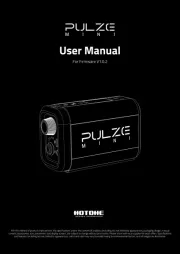
5 Augustus 2025
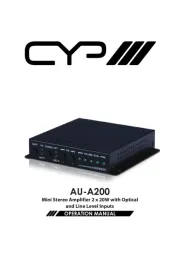
5 Augustus 2025
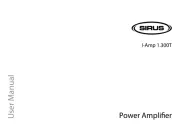
5 Augustus 2025
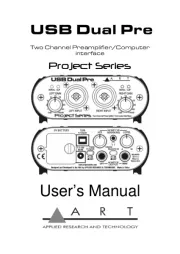
5 Augustus 2025
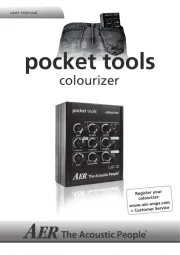
5 Augustus 2025
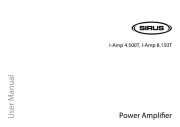
5 Augustus 2025
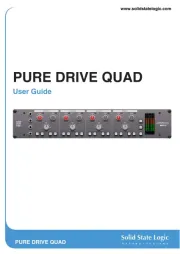
4 Augustus 2025
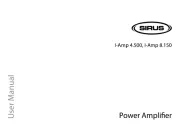
4 Augustus 2025
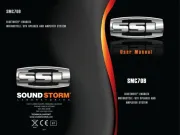
4 Augustus 2025
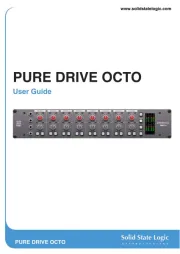
4 Augustus 2025